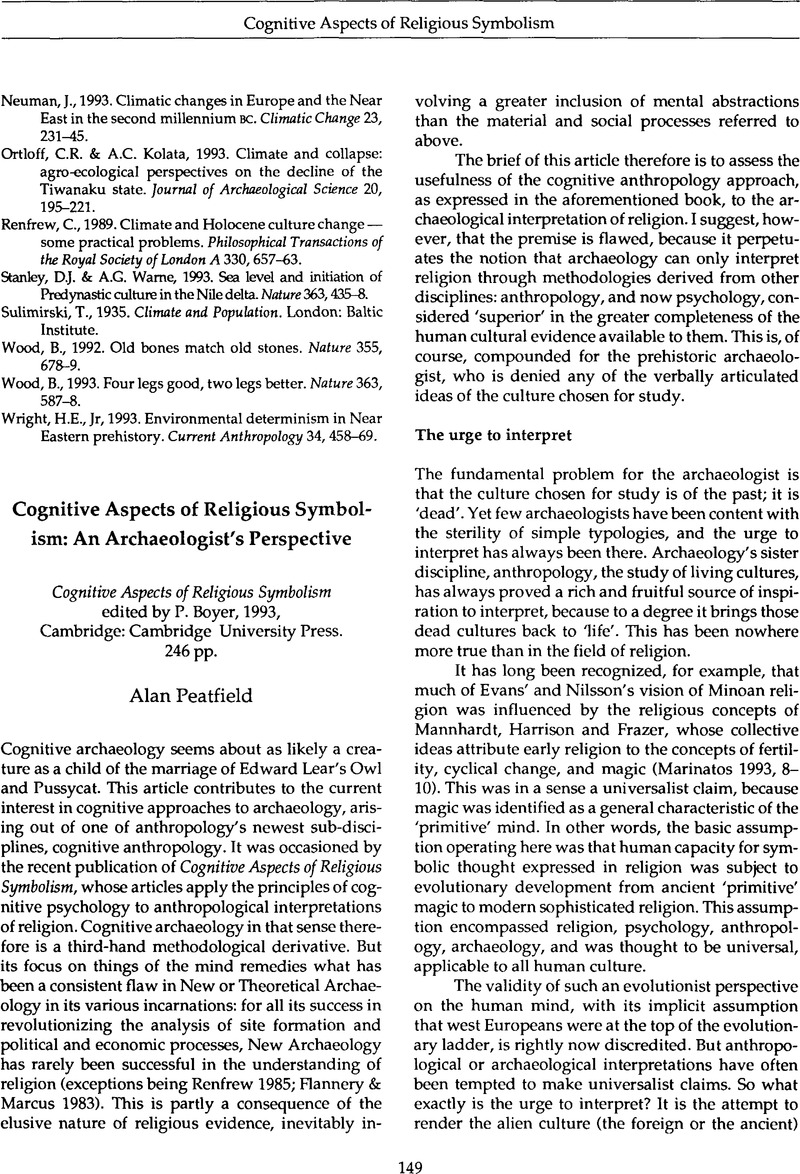Crossref Citations
This article has been cited by the following publications. This list is generated based on data provided by Crossref.
Stein, Gil J.
1998.
Heterogeneity, power, and political economy: Some current research issues in the archaeology of Old World complex societies.
Journal of Archaeological Research,
Vol. 6,
Issue. 1,
p.
1.
Stein, Gil J.
2001.
Archaeology at the Millennium.
p.
353.
Blakely, Sandra
2011.
5
Toward an Archaeology of Secrecy: Power, Paradox, and the Great Gods of Samothrace.
Archaeological Papers of the American Anthropological Association,
Vol. 21,
Issue. 1,
p.
49.
Jaffe, Yitzchak Y.
2015.
Questioning religious essentialism – Ritual change and religious instability in ancient China.
Journal of Social Archaeology,
Vol. 15,
Issue. 1,
p.
3.





